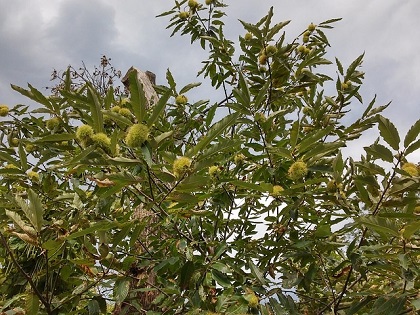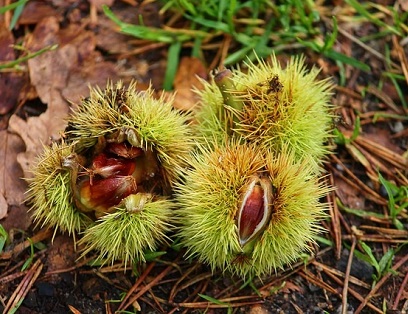Act!
Inspiration · Resources'Bold' Chestnut
CAN YOU CHECK THE HEALTH OF YOUR LOCAL TREE?


The Royal Horticultural Society (RHS), Defra, APHA and Forest Research are asking the public to help monitor the health of Sweet Chestnut trees (Castanea sativa) to help map the spread of organisms spreading across Europe and new to the UK.
Becoming involved in the project, announced during this year's National Plant Health Week in May, is easy and doesn't require any specialist knowledge. The health of these trees, which provide food and habitat for a diverse range of wildlife, is facing a growing threat from two devastating problems: 'the oriental chestnut gall wasp' (OCGW) and a fungus, called 'chestnut blight'. To tackle this issue, the organisations are asking for us to check on the nearest sweet chestnut tree to where we live, and reporting back whether there are any signs of disease (including distorted leaves or buds with swellings/galls, a sparse crown and sunken, cracking or discoloured bark) or whether the trees are healthy.
The results will help Forest Research scientists to determine the location and proportion of affected trees and create a national map of the health of sweet chestnuts across Britain, which will be invaluable for targeting future surveillance efforts and showing where current efforts to protect the trees are working.
These are the few simple steps you'll need to take part:
1. Make sure you know how to identify a sweet chestnut tree
2. When you see a sweet chestnut, look for signs of sweet chestnut blight or oriental chestnut gall wasp
3. Take photos of the tree and any symptoms of OCGW or chestnut blight
4. Go to Tree Alert, the official government reporting tool for tree health, and fill in a report
For more information, identifying photos and links to the above, you can visit the RHS website HERE
NB. The vital information collected from your collective participation will be published during National Tree Week in November 2023.